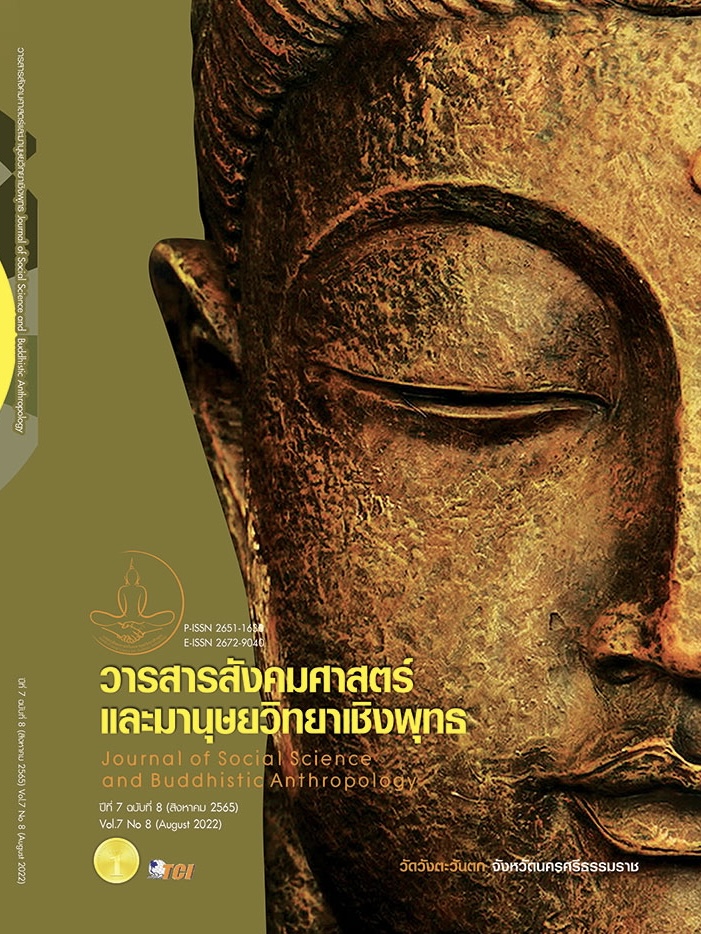THE IMPACT OF MICROFINANCE INSTITUTIONS ON THAI POVERTY HOUSEHOLDS
Keywords:
Microfinance Institutions, Household Income, Household Expenditure, Poverty HouseholdsAbstract
The objective of this research article was to determine the impacts of microfinance institutions (MFIs) on Thai poverty household welfare in terms of income and expenditure. This study used secondary data from the Household Socio-Economics Survey (SES) of the National Statistical Office of 26,107 households from all Thai households across the country between 2015-2019. The fixed-effects model is used to estimate the effect in this article. The results found that 1) there is the statistically-significant negative effects of the member of microfinance institutions on poverty household income and poverty household expenditure when compare with a non-member at 0.01 significance level 2) 66.30 percent of Thai poverty households are not members of MFIs and cannot access financial services of MFIs. The policy recommendation are all of the agencies that supervise the operations of MFIs such as the Department of Community Development, Ministry of interior; the Department of Cooperative Promotion, Ministry of Agriculture and Cooperatives, including private financial institutions should focus on helping each other in a close contact from being members in the same community, should not exclude any members of the community especially the lowest-lover poor households. All members help each other to monitor use of the loan in the right purpose such as self-improvement, business improvement and promoting education for their children. The government should be integrated between all of the agencies and reduce redundancy. Distribute the target group to the poor, not let the burden of working overlap in the same group of people, and transitioning from organization that is redundant or unable to address accumulated problems into a new organization that is ready to accept more targeted members, easier access to funding, standardize technology to support the microfinance institution operations, and distributing the target group of the poverty households that not duplicated in the same group of people.
References
พรพจน์ เรืองแสงทองกุล. (2563). จากองค์กรการเงินชุมชนสู่สถาบันการเงินประชาชน. เรียกใช้เมื่อ 10 พฤษภาคม 2565 จาก http://web.krisdika.go.th/pdfPage.jsp ?type=act&actCode=13761
วศิรพล พรหมโคตรวงศ์ และนิรมล อริยอาภากมล. (2561). ผลกระทบของกองทุนหมู่บ้านต่อสวัสดิการของครัวเรือนชนบทในประเทศไทย. วารสารเศรษฐศาสตร์และกลยุทธ์การจัดการ, 5(2), 51-66.
สำนักงานสถิติแห่งชาติ. (2561). จำนวนครัวเรือนทั้งหมด ครัวเรือนยากจน และครัวเรือนไม่ยากจนเมื่อวัดด้านรายจ่ายเพื่อการอุปโภคบริโภค จำแนกตามเขตพื้นที่ ปี พ.ศ. 2531 - 2560. เรียกใช้เมื่อ 10 พฤษภาคม 2565 จาก http://statbbi.nso.go.th/ staticreport/page/sector/th/08.aspx
สำนักงานสภาพัฒนาการเศรษฐกิจและสังคมแห่งชาติ. (2563). สถิติด้านความยากจนและการกระจายรายได้. เรียกใช้เมื่อ 10 พฤษภาคม 2565 จาก https://www.nesdc.go.th/ main.php?filename=social
Ali, S. I. et al. (2015). Empirical Assessment of the Impact Of Microfinance On Quality Of Life. Pakistan Business Review, 5(1), 808-828.
Guo, L. & Jo, H. (2017). Microfinance Interest Rate Puzzle: Price Rationing or Panic Pricing? Asia-Pacific Journal of Financial Studies, 46(2), 185-220.
Kaboski, J. P. & Townsend, R. M. (2012). The impact of credit on village economies. American Economic Journal: Applied Economics, 4(2), 98-133.
Li, X. et al. (2011). The welfare impact of microcredit on rural households in China. Journal of Socio-Economics, 40(4), 404-411.
Littlefield, E. et al. (2003). Is microfinance an effective strategy to reach the millennium development goals? Focus note No. 24. Washington DC: CGAP-Consultative Group to Assist the Poor.
Mazumder, M. S. U. & Lu, W. (2015). What impact does microfinance have on rural livelihood? A comparison of governmental and non-governmental microfinance programs in Bangladesh. World development, 68(3), 336-354.
Morduch, J. (1998). Does microfinance really help the poor?: New evidence from flagship programs in Bangladesh. In Research Program in Development Studies. Woodrow School of Public and International Affairs.
Park, A. & Ren, C. (2001). Microfinance with Chinese characteristics. World development, 29(1), 39-62.
Remer, L. & Kattilakoski, H. (2021). Microfinance institutions’ operational self-sufficiency in sub-Saharan Africa: empirical evidence. International Journal of Corporate Social Responsibility, 6(1), 1-12.
Downloads
Published
How to Cite
Issue
Section
License
Copyright (c) 2022 Journal of Social Science and Buddhistic Anthropology

This work is licensed under a Creative Commons Attribution-NonCommercial-NoDerivatives 4.0 International License.








